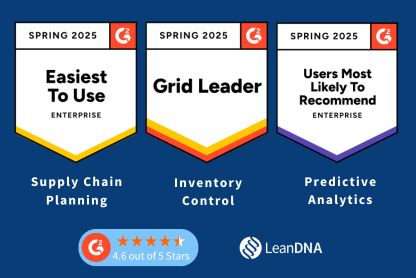Effective inventory management is crucial for manufacturing companies to ensure smooth operations and meet customer demands. An inventory action plan helps streamline your supply chain, optimize stock levels, minimize costs, and improve efficiency overall. In this blog post, we will guide you through the process for creating an inventory action plan tailored to your manufacturing supply chain.
How to Create a Successful Inventory Action Plan
Analyze Current Inventory
Start by conducting a thorough analysis of your current inventory. Review historical data, sales trends, and demand patterns to identify slow-moving or obsolete items. Categorize your inventory based on its criticality, lead time, and profitability. This analysis will provide valuable insights into the strengths and weaknesses of your existing inventory management practices.
Set Inventory Targets
Establishing clear inventory targets is essential for maintaining the right stock levels. Consider factors such as customer demand, production lead times, and market conditions. Determine optimal stock levels by balancing the costs associated with holding inventory, such as storage and obsolescence, against the risks of stockouts and customer dissatisfaction. Set targets for each category of inventory based on these considerations.
Enhance Execution and Efficiency
Accurate, real-time analytics is the foundation of effective inventory management. Improve the effectiveness of supply chain planning and production by prioritizing inventory actions and automating analytics.
Optimize Inventory
Utilize best practices aim to reduce inventory carrying costs by minimizing the amount of inventory held at any given time without compromising production. Review your production and procurement processes to identify opportunities to reduce inventory costs. Consider strategies such as vendor-managed inventory, lean manufacturing, and frequent small-batch production. JIT can help improve cash flow, reduce waste, and enhance responsiveness to market changes.
Enhance Supply Chain Collaboration
Effective collaboration with suppliers, distributors, and other partners in your supply chain is crucial for inventory optimization. Establish regular communication channels and share relevant information to improve visibility and coordination. Explore options for real-time data sharing, automated replenishment systems, and mutually beneficial agreements, such as consignment inventory or vendor-managed consignment.
Regularly Monitor and Evaluate
Continuous monitoring and evaluation are vital to ensuring the effectiveness of your inventory action plan. Regularly review key performance indicators (KPIs) such as inventory turnover ratio, fill rate, stockouts, and carrying costs. Identify areas for improvement and take corrective actions when necessary. Keep abreast of industry trends and evolving customer demands to adjust your inventory plan accordingly.
Implement Innovative Inventory Management Systems
Invest in robust inventory control systems to facilitate efficient tracking and management of your inventory. Consider adopting technology solutions like enterprise resource planning (ERP) systems, inventory management software, and barcode scanning systems. These tools can help automate processes, monitor stock levels, track shipments, and generate valuable reports for data-driven decision-making.
Getting Started with Your Inventory Action Plan
Creating an effective inventory action plan for your manufacturing supply chain requires careful analysis, strategic decision-making, and continuous improvement. By analyzing your current inventory, setting appropriate targets, improving demand forecasting, implementing continuous improvement practices, enhancing collaboration, and leveraging technology, you can optimize your inventory levels, reduce costs, and enhance customer satisfaction. A well-executed inventory action plan will enable your manufacturing company to thrive in a dynamic business environment.
With LeanNDA You Can Create and Execute an Inventory Action Plan That Works
Manage Shortages & Production Readiness
Enhance visibility into the incoming, available, and needed inventory to improve customer on-time delivery.
Maximize Efficiency and Collaboration
Connect teams and technology to streamline and standardize processes for higher performance.



